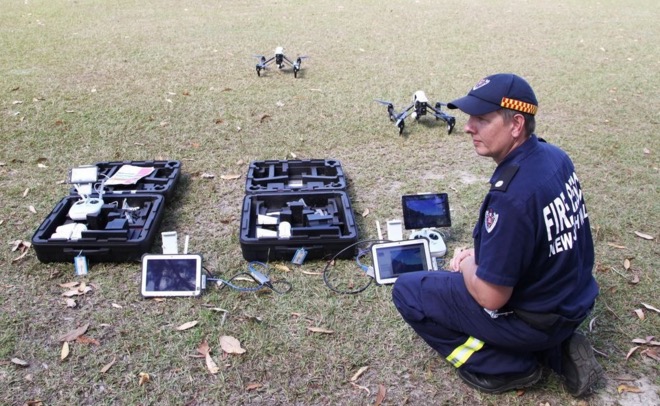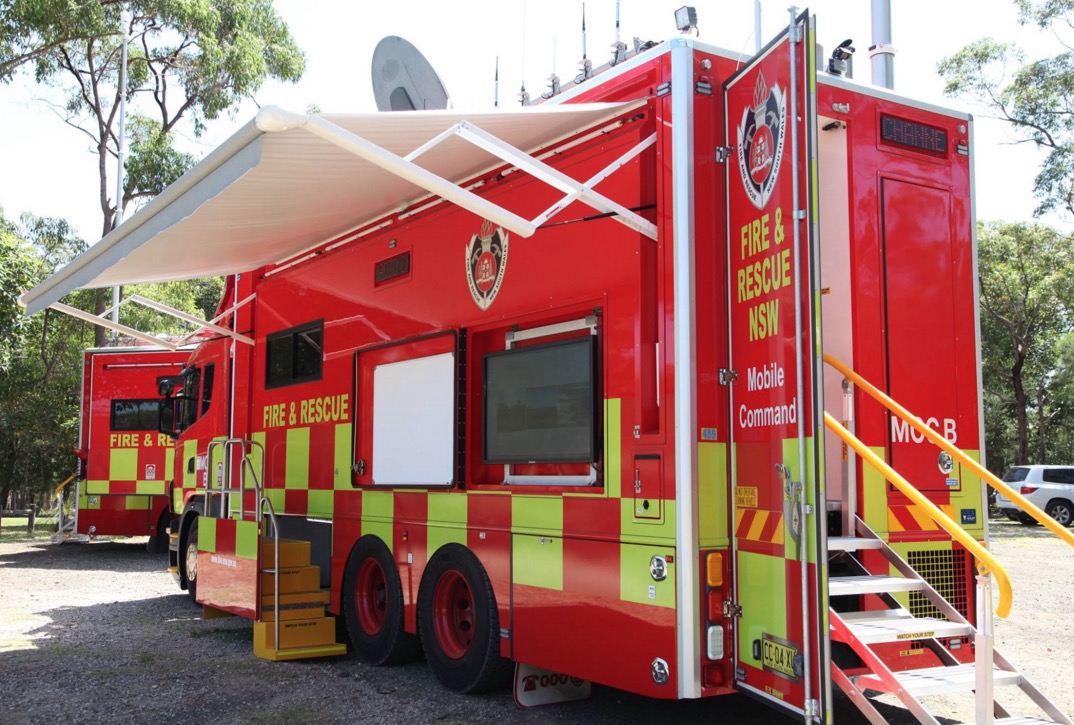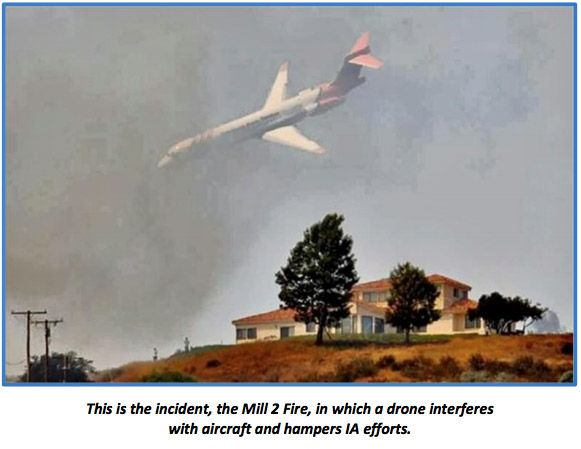The Kiowa County Media Center, a non-profit organization, shot this very impressive footage of the Anderson Creek Fire that has burned close to 400,000 acres in Kansas and Oklahoma. They uploaded it to YouTube on March 25, 2016.
Tag: drone
Fire and Rescue New South Wales acquires additional technolgy
Fire and Rescue New South Wales (FRNSW) recently introduced to the Australian public examples of a multi-million-dollar batch of new technological devices they have added to the firefighters’ tool box.
Drones are the latest weapon in the fight against fire, chemical spills and natural disasters, providing firefighters with real-time images of areas too dangerous to access and enabling rapid damage assessments. Two new drones are part of this new package, which also includes two custom-built mobile command centers and the installation of more than 180 mobile data terminals in fire trucks across NSW. 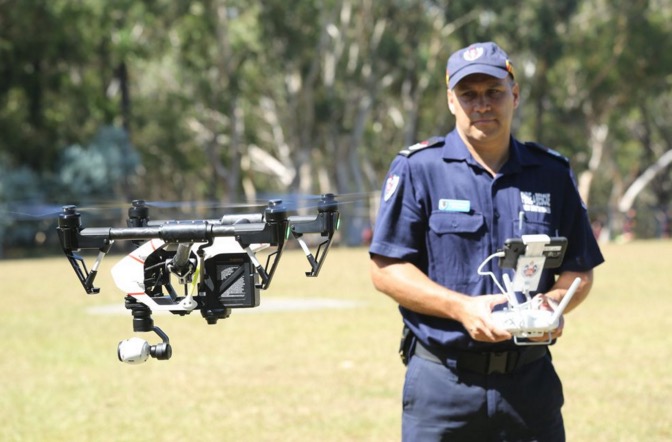
Below is an excerpt from an article at Mashable:
The two mobile command centres feature radio and video feeds, as well as communication services such as high-speed satellite and 4G. The mobile data terminals will give firefighters access to weather data and local hydrant, gas and electricity maps as they head to incidents.
The drones, paired with six trained firefighters to operate them, will give response crews a view of the emergency site from above, whether during a fire, flood or chemical spill.
“Each vehicle has high speed internet and a 100-meter Wi-Fi bubble which could be invaluable to communities cut off from technology following a catastrophic fire or storm event,” Fire and Rescue NSW Commissioner Greg Mullins said in the statement.
“This new technology improves the information available for first responders and will ensure that we remain a world class fire, rescue and hazmat service.”
Wildfire Briefing, February 5, 2016
The above image is from Headwaters Economics
Land use planning to reduce wildfire risk
Headquarters Economics released a report about how five cities have used innovative land use planning techniques as a way to adapt to the growing threat from wildfires. The authors met with city planners, elected officials, and firefighters in Austin, Texas; Boulder, Colorado; Flagstaff, Arizona; San Diego, California; and Santa Fe, New Mexico—all communities with a recent history of wildfire and a reputation for being problem solvers.
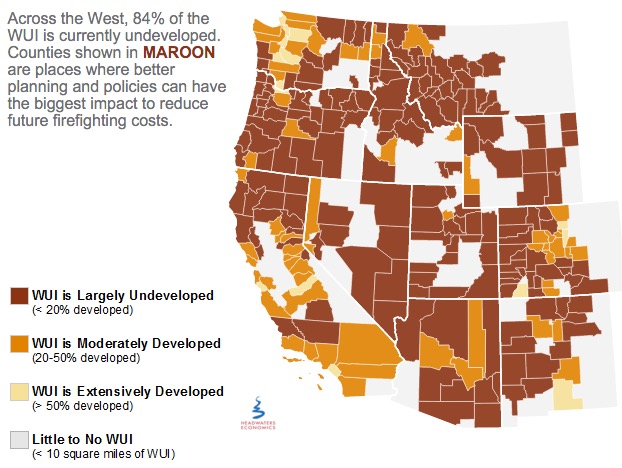
Prescribed fire escapes in Florida
In St. Johns County, Florida on Tuesday a prescribed fire intended to treat 140 acres off County Road 208 escaped control when an unexpected 20-25 mph wind gust scattered burning embers. About 270 acres later the Florida Forest Service was able to contain the blaze.
Spokesperson Julie Maddux said statewide in 2015 the Florida Forest Service burned more than 236,000 acres during prescribed fires and none of them got out of control.
U.S. Forest Service releases findings on the effects of drought for forests and rangelands
The U.S. Forest Service this week released a new report, Effects of Drought on Forests and Rangelands in the United States: A Comprehensive Science Synthesis, that provides a national assessment of peer-reviewed scientific research on the impacts of drought on U.S. forests and rangelands. This report will help the Forest Service better manage forests and grasslands impacted by climate change.
“Our forests and rangelands are national treasures, and because they are threatened, we are threatened,” said Agriculture Secretary Tom Vilsack. “This report confirms what we are seeing, that every region of the country is impacted by the direct and indirect effects of drought conditions and volatile weather patterns. Sixty million Americans rely on drinking water that originates on our 193 million acres of national forest and grasslands. They support 200,000 jobs and contribute over $13 billion to local economies every year.”
Utah seeks jail time for drone operators that interfere with wildfire operations
Last year there were numerous instances across the West of drones flying into the airspace above active fires and interfering with the operations of firefighting aircraft.
From the AP:
..A new proposal in the Utah Legislature aims to address the growing problem by creating a possible penalty of jail time for people who fly drones within 3 miles of a wildfire.
A House committee was scheduled to discuss the proposal Tuesday afternoon but the hearing was postponed.
Republican Rep. Kraig Powell of Heber City, the proposal’s sponsor, said he asked to postpone the meeting so he could get more input from interested parties. He said he may add exemptions for certain entities, such as public utility companies that need to use drones to see if the fire will impact gas lines.
Jason Curry of the Utah Division of Forestry said he hopes lawmakers back the bill…
“I really hope it doesn’t take a major mishap and somebody to lose their life for the public to take it seriously,” Curry said.
Washington state treats less land with prescribed fire than their neighbors
From the Seattle Times:
Washington lags far behind neighboring states in using controlled burns to thin out dangerously overgrown woodlands.
After back-to-back years of catastrophic forest fires, some state lawmakers want that to change.
“I’ve had it. I think it is time to delve into the policy,” said state Sen. Linda Evans Parlette, R-Wenatchee, who represents a large swath of North Central Washington scorched in last year’s record-setting fires that burned more than 1 million acres.
Parlette is sponsoring a pair of “fight fire with fire” bills that would require more controlled burns on state lands and loosen smoke regulations to make it easier for federal and private land managers to conduct burns.
Experts say expanding the use of controlled burns is vital to restoring forests to health, leaving them less vulnerable to massive blazes when the summer fire season hits.
But some U.S. Forest Service officials and other critics say the state’s Department of Natural Resources (DNR), led by Commissioner of Public Lands Peter Goldmark, has discouraged controlled burns in recent years because of fears over smoke drifting into communities.
Wildfire briefing, November 5, 2015
Deceased man found in vegetation fire
Firefighters found the body of a 90-year-old man in a brushfire on November 3 near Bainbridge, Ohio. Preliminary indications are that Melvin B. Elliott was raking leaves during the early stages of the fire, but the cause of death has not been determined.
California city bans drones during emergencies
The city council of Poway, California passed a new ordinance this week that prohibits launching, operating or landing drones in any part of the city where an emergency has been declared. The objective is to eliminate conflicts between unmanned aerial vehicles and helicopters or fixed wing aircraft responding to the incident. Several times this year hobby drones flown near wildfires have required firefighting helicopters and air tankers to be grounded for safety reasons.
Efforts to wrest control of federal lands can’t be ignored
The movement to grab federal lands, such as national forests, BLM land, and national parks, and turn it over to states or private landowners can’t be ignored. The efforts are real and are not going away. At least 37 land transfer bills have been introduced in state legislatures with six of them passing; another four have been finalized as “study” legislation.
Below is an excerpt from an article in Wyofile written by Angus M. Thuermer Jr., in which the view is expressed that one of the tactics is to starve federal agencies by reducing their funding, then accuse them of mismanagement, and arguing that states, individuals, or large companies would be better land managers.
[The views of Whit Fosburgh, president and CEO of the Theodore Roosevelt Conservation Partnership] illuminate the seriousness with which some in the conservation community are now viewing the renewed Sagebrush Rebellion. The movement is supported by a strategy that’s decades old — starving land management agencies — transfer critics say. Launched under the guise of deficit reduction and fiscal responsibility, budget cutting is also a cynical ploy to sow dissatisfaction of federal western land management at the grassroots level, Fosburgh contends.
Dozer operator describes how drone interfered with initial attack on the Mill 2 Fire
This Rapid Lesson Sharing, below, about a fire in southern California was distributed by the Wildland Fire Lessons Learned Center.
****
“At approximately 1430 hours, a report is radioed to Dispatch of a 1/4-acre vegetation fire located directly behind our Mill Creek Fire Station. Stepping outside the office, my swamper and I see heavy smoke to the north of the compound. We quickly make our way to the transport to off-load the dozer and engage the fire.
Upon size-up of the rapid rate-of-spread and eliminating the option of anchoring at the heel and cutting direct due to steepness of terrain, I prioritize my tactics to protection of life and property. I then make a decision to track my dozer up an indirect route—knowing there are homes and property owners at risk at the top of the ridge in the fire’s path.
At this point, one ridge to my north separates the ridge I am tracking up and the main fire. Air resources are enroute. At the pace I am ascending the ridge, I figure the air resources will arrive on scene and slow the forward rate-of-spread down long enough to allow me to reach the homes.
Fire Advances Toward Homes
As I crest the ridge, I only have a shallow drainage to cross—in which the fire has established itself just below me and is making a strong push toward the homes. At that moment, emergency traffic airs over command frequency that all aircraft have been grounded due to a drone sighted in the fire area.
As the fire advances, I make eye contact with the property owner across the drainage. At this time, the only option I have is to hope the fire will crest the ridge and minimize in intensity long enough for me to cross the drainage to the homes.
I take a moment to size-up and reevaluate my escape route and safety zone and try to develop a contingency plan with my swamper.
Drone Operator Confronted
Fortunately, the fire does as I had hoped. My swamper and I are able to cross the drainage and engage the fire directly, assisting the crews and engine personnel behind the threatened homes. Next, the drone clears the area and air suppression resources reengage.
When the drone is spotted returning, a U.S. Forest Service employee is able to follow it and confront the person responsible. His vehicle information is documented and he is notified that the authorities are enroute to educate him on drone use in wildfire areas.
However, the drone operator refuses to wait and flees the scene.
LESSONS
With the recent high frequency of drone use affecting wildfire suppression tactics, this incident has raised my awareness to the impact that drones have on wildfire suppression tactics.
In the future I plan on being more cautious when implementing air support into my tactical decisions and suppression efforts.”
****
Note from Bill: I know someone will say planned firefighting tactics should not depend on the predicted availability of aviation resources. However, to give the dozer operator the benefit of the doubt, his initial plan may have been to wait for the expected retardant drops to slow the spread of the fire before he committed himself to crossing the drainage to defend the structures.
Wildfire briefing, July 15, 2015
Saskatchewan Premier wants a national fire cache and a fire mapping plane
The Premier of Saskatchewan, Brad Wall, wants the national government to establish a national cache of firefighting supplies and equipment that could be distributed when a province, or provinces, have multiple large fires ongoing. Perhaps he is thinking of a system similar to the one used in the United States, which has a national cache in Boise at the National Interagency Coordination Center.
“Some of those basic things that we would normally just call Manitoba or B.C. and say, ‘We need these things,’ well they were all fighting fires,” Mr. Wall said Wednesday. “Why, as a country, wouldn’t we have a cache? A national store to draw from if there is an occasion again where so many provinces are involved in fighting major fires?”
Mr. Wall also would like the see Canada acquire and operate a fire mapping plane that would use infrared detection equipment to see through smoke to map the perimeters and intensely burning areas of wildfires.
“If we could have at least one of those available nationally to provinces, because when it’s smokey, you have this whole flight … that’s grounded, and you might lose a little bit of ground that you might otherwise gain in better weather,” Wall said.
Wall will raise the idea at the premiers meeting in St. John’s, where he was heading on Wednesday.
Another drone shuts down aerial firefighting equipment
Sunday afternoon firefighting air tankers had to cease their operations on a fire near Yucaipa, California for about eight minutes when a drone was spotted over the fire.
Firefighting soldier takes bathroom break, gets lost for six hours
One of the 600 soldiers helping to suppress wildfires in Saskatchewan took a break to relieve himself Monday and didn’t return. His absence was noticed at 2 p.m. and a search began.
Below is an excerpt from an article at CBC.ca:
“I am happy to report, he is uninjured except for his pride, and many lessons, a number of lessons to be learned about this,” Brig.-Gen. Wayne Eyre said.
The Canadian Army said the soldier, one of some 600 from the Prairies deployed in the forest fire zone, had walked into the forest to relieve himself in privacy and got lost.
When others noticed he was missing at around 2:20 p.m. CST, a massive search began, involving soldiers, the Wildfire Management Centre, the RCMP, Canadian Rangers and other agencies.
The search virtually shut down firefighting in the area yesterday afternoon.
Eyre acknowledges that there should have been a buddy system in place, and the soldier, described as experienced, should have stayed in one spot.
Around 8:30 p.m., he was found.


